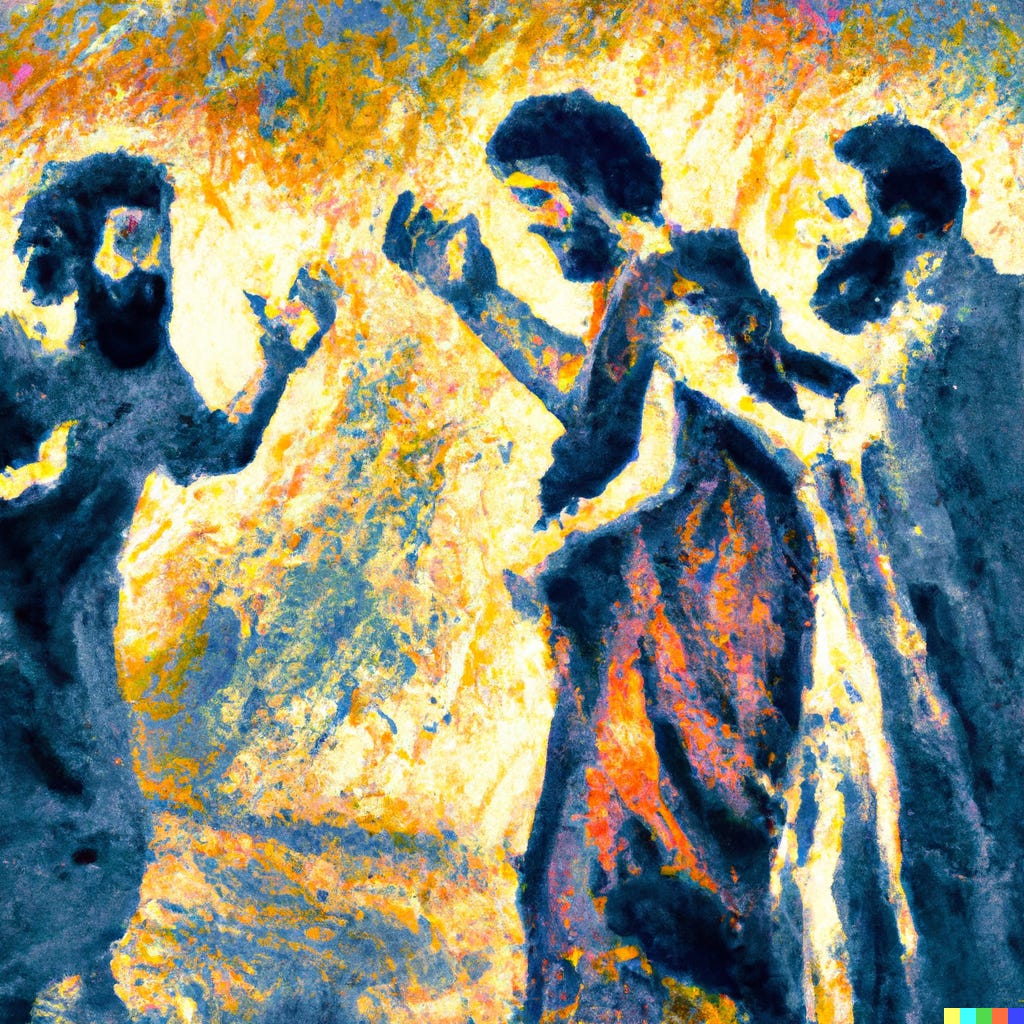Shemos: Dasan and Aviram – to Blame or Not to Blame?
The Torah itself only ascribes one wrongdoing to Dasan and Aviram. It is the Sages who place them at the scene of other crimes. What are we to make of this? Let's turn to Rashi and Ralbag for insight.
The Torah content for the remainder of January has been sponsored by Yehuda in gratitude for fifteen years of friendship and learning.
Click here for a printer-friendly 1-page version of this article, and click here for the podcast version.

Shemos: Dasan and Aviram – to Blame or Not to Blame?
The events that led to Moshe Rabbeinu’s flight from Egypt are recounted in the span of three pesukim:
[Moshe] went out on the second day, and behold, two Hebrew men were fighting, and he said to the guilty one, "Why do you strike your fellow?" [The man] said, "Who set you as a chief and judge over us? Do you intend to kill me as you killed the Egyptian?" Moshe feared, saying, "Indeed the matter is known." Paroh heard the matter and sought to kill Moshe, but Moshe fled from before Paroh; he dwelled in the land Midian, and sat down by the well. (Shemos 2:13-15)
Ask any Jewish day school student, “Which two Hebrew men were fighting?” and they’ll likely answer, “Dasan and Aviram.” This view of the Sages, cited by Rashi (Shemos 2:13), is given full expression in Midrash Tanchuma 2:13:
He went out on the second day, and behold, two Hebrew men were fighting. Who were they? Dasan and Aviram. They were the ones who said, “Let us appoint a leader and return to Egypt!” (Bamidbar 14:4). They are the ones who rebelled at the sea (Shemos 14:11). They are the ones who left over some of the manna, as it is written: “Men left over from [the manna] until the morning” (ibid. 16:20), and they are the ones who went out to gather [manna] and didn’t find any (ibid. 16:27). They are the ones who were involved in Korach’s dispute (Bamidbar 16:1), as it is stated: “the same Dasan and Aviram” (ibid. 16:27), for they persisted in their wickedness from beginning to end.
The Sages do not claim with certainty that Dasan and Aviram were involved in these incidents. The Torah Temimah explains that “because [Dasan and Aviram] were known to be contentious people, [the Sages] ascribe [fault] to them, following the principle of tolin es ha’kalkalah l’mekulkal (we ascribe degeneracy to the degenerate)” (Shemos 2:13, note 37). In other words, the midrash implicates Dasan and Aviram for homiletical reasons – not because we have a tradition that they were behind all this troublemaking as a matter of historical fact.
Ralbag does not blame Dasan and Aviram. He, too, favors a homiletical approach – as evidenced by his practice to conclude every section of his Chumash commentary with a list of toalos (beneficial lessons) that emerge from the text – but unlike Rashi, Ralbag grounds his ethical lesson in the pshat (straightforward meaning) of the narrative:
The 8th lesson is to inform us of the evil conduct of Israel at that time, when they were in the throes of the [Egyptian] exile – namely, that they were fighting with each other, and striking each other, and they hated rebuke [to the extent] that when Moshe rebuked them about [their fighting], they did not want to accept his rebuke, but instead publicized the matter of killing the Egyptian in a way that reached Paroh, forcing Moshe to flee. All of this is to teach us that the reason why we were in such a severe state of exile is because of this bad conduct, to the extent that if they would have improved their actions and drawn close to Hashem according to their ability, they would not have been in such a severe exile. For this same reason you will find that the exile did not begin until Yosef and all his brothers died, even though it had been decreed upon them that they would be enslaved and oppressed for 400 years, because good free will decisions can override the natural order …
Ralbag maintains that the degenerate behavior exhibited in our pesukim – quarrelling, physical assault, hatred of rebuke, informing on a fellow Jew – was not limited to two “bad apples.” It was endemic. According to Ralbag, this evil conduct was so pervasive that it resulted in prolonging the exile longer than it needed to be.
Each approach has its pros and cons. The advantage of Ralbag’s approach is that it sheds light on the sociological reality of the Egyptian exile and underscores how we, as a nation, could have avoided unnecessary suffering by remaining close to Hashem or doing teshuvah. The disadvantage is that Ralbag’s insight is abstract and difficult to relate to on a personal level. The disadvantage of Rashi’s approach is that it’s easy to simply blame Dasan and Aviram without reflecting on how their behavior persists in ourselves and in our people today. The advantage of Rashi’s approach is that Dasan and Aviram can be held up as emotionally resonant anti-role models for their bad character traits. The educator must decide which approach is the most effective for each audience and context.
If you’re interested in a full-length shiur I gave on this topic, entitled Midrashic Embellishment: Why Did Chazal Villainize “the Bad Guys” and Vindicate “the Good Guys” and What are the Educational Implications for Us?, click here for the YouTube version (featuring the PowerPoint presentation that accompanied the shiur) and click here for the podcast version.



